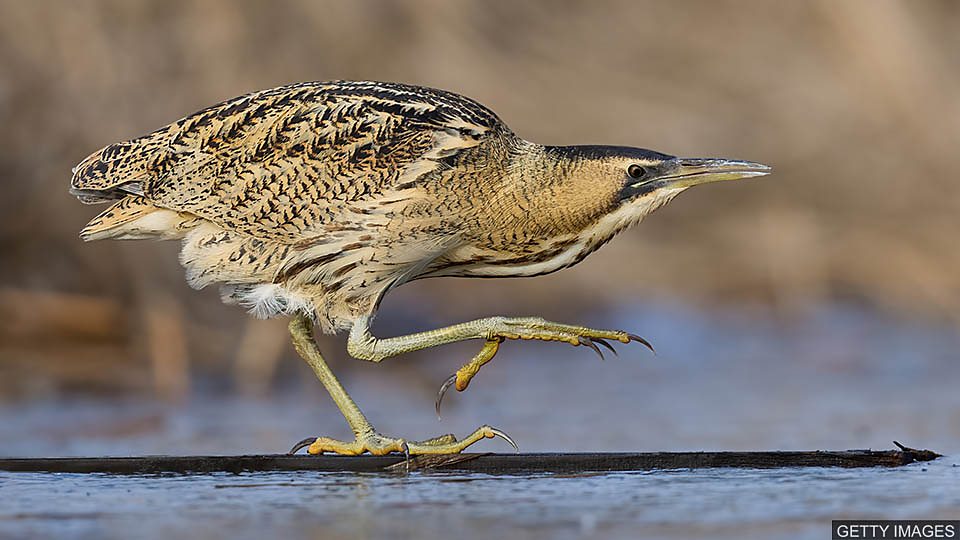麻鳽是英国叫声最响亮的鸟。这种鸟几乎两度从英国消失不见,但现在其数量正在恢复。英国皇家鸟类保护协会(The Royal Society for the Protection of Birds)的报告说,2021年统计有228只雄性麻鳽 ,是 “破纪录的一年”,与2019年的209只相比有所增加。
The boom of a male bittern doesn’t come from his voice box. Unlike other birds, he uses muscles around his windpipe to expand his entire gullet into an echo chamber.
雄麻鳽的叫声并非来自它的喉头。与其它鸟类不同,它利用气管周围的肌肉将整个食道扩张成一个回音室。
Scientists count them by listening for those foghorn-like booms that can be heard from three miles (5km) away. There were estimated to be just 11 males remaining in the UK in the 1990s.
科学家们通过聆听从三英里(五公里)外传来的、雾角般的低鸣声来统计麻鳽的数量。据估计,在上世纪90年代的时候,英国只剩下11只雄麻鳽。
Thanks to systematic restoration and re-creation of wetlands that were previously drained for agriculture, 228 males were counted in 2021.
在对曾为农耕而被排干的湿地进行了系统的修复和再造后,在2021年,雄麻鳽的数量共有228只。
Experts say that wetlands are one of the UK’s rare conservation success stories, and that other birds, including cranes, spoonbills and egrets, have returned to sites they’d previously vanished from.
专家表示,湿地保护是英国为数不多的自然保护成功案例之一,其它鸟类,包括鹤、琵鹭和白鹭,也已重现于之前消失的地方。
词汇表
boom 隆隆的低鸣声
gullet 食道
echo chamber 回音室
foghorn-like (声音)像雾角般的
restoration 修复
wetlands 湿地
success stories 成功案例
vanished 消失不见
阅读理解:请在读完上文后,回答下列问题。
1. How far away can the sound of a bittern be heard?
2. True or false? The bittern’s ‘boom’ sound comes from its voice box.
3. What changes have helped to increase the numbers of bitterns?
4. Has this ‘conservation success story’ only helped bitterns?
答案
1. How far away can the sound of a bittern be heard?
Scientists count them by listening for those foghorn-like booms that can be heard from three miles (5km) away.
2. True or false? The bittern’s ‘boom’ sound comes from its voice box.
False. The boom of a male bittern doesn't come from his voice box.
3. What changes have helped to increase the numbers of bitterns?
A systematic restoration and re-creation of wetlands that were previously drained for agriculture has helped increase the numbers of bitterns.
4. Has this ‘conservation success story’ only helped bitterns?
No. Improvements to wetlands mean other birds, including cranes, spoonbills and egrets, have returned to sites they previously vanished from.


 3342次下载
点击下载
3342次下载
点击下载
 2621次下载 点击下载
2621次下载 点击下载
 4734次下载 点击下载
4734次下载 点击下载
 1854次下载 点击下载
1854次下载 点击下载
 1391次下载 点击下载
1391次下载 点击下载
 1391次下载 点击下载
1391次下载 点击下载











